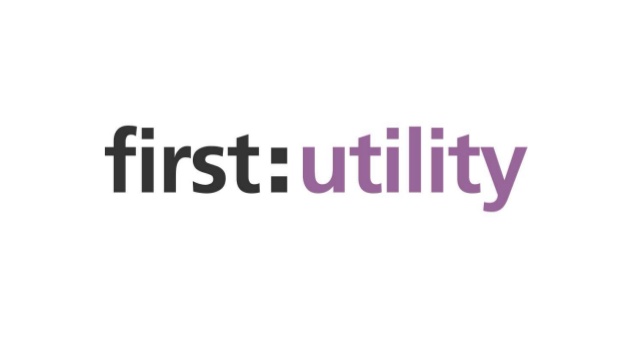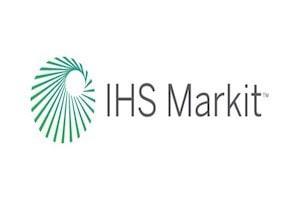What are the Core Problems and Operational Risks of Ansible AWX?
Here at Sirius Open Source, we often get asked, "What are the problems with Ansible AWX?" This is a very good question, and one that deserves a clear, honest answer. Buyers generally worry more about what might go wrong than what will go right when making a purchasing decision, and we believe it is a moral obligation to address these issues transparently.
We want to be upfront: AWX is inherently less stable and more prone to bugs and breaking changes than its commercially hardened counterpart. While AWX provides a powerful web-based platform for automation, its role as the Open Source, upstream community project means it is fundamentally designed to be a "frequently released, fast-moving project where all new development happens". This focus on rapid innovation creates an operational paradox for enterprises, as the challenges associated with AWX are not just isolated bugs but symptoms of this core architectural philosophy, resulting in significant risk and operational overhead.
This article will detail the core technical and operational problems associated with Ansible AWX, explaining the resulting high labor burden, helping you understand why this platform, although "free," transfers major costs and risks to your internal team, and enabling you to make the most informed decision possible.
1. The Foundational Dilemma: Instability and Feature Gaps
The primary "problem" with Ansible AWX stems from its identity as the upstream, experimental project. This means that while users get early access to new features, they must accept the inherent cost of instability.
The strategic decision to use AWX is a business calculation based on an organization's tolerance for risk and its capacity to manage operational overhead. This contrasts starkly with Red Hat Ansible Automation Platform (AAP), which is the downstream, commercially supported product built from hardened, stable releases designed for long-term stability and predictability.
Organizations relying on AWX accept the risk of falling behind in enterprise functionality. Red Hat continually enriches AAP with features tailored for large organizations, such as advanced Role-Based Access Control (RBAC), clustering capabilities, and advanced Automation Analytics. This widening feature gap can lead to technical debt and necessitate a costly and complex migration later on when enterprise features become business imperatives.
2. High Operational Burden and Deployment Complexity
Ansible AWX is often misperceived as an easy-to-deploy GUI alternative, but its deployment model introduces significant technical problems and cost-driving complexity.
Kubernetes-Native Deployment
The installation process shifted from a relatively simple Docker Compose model to a more complex, Kubernetes-native approach managed by the AWX Operator. This change fundamentally alters the required skill set: the AWX administrator must now also become a Kubernetes operator. Users without prior Kubernetes experience frequently encounter "errors upon errors upon errors" with "absolutely no clue where to start looking for solutions".
Low-Level Troubleshooting Required
The operational burden of AWX extends into low-level container and network management. When the abstraction layer provided by the AWX Operator fails, administrators must navigate the complexities of the underlying container orchestrator and system-level issues. Examples of low-level problems requiring deep technical diagnosis include:
- Permission Issues: Jobs failing due to a "Failed to create temporary directory" error, which is often a permission issue on the target host that needs system-level resolution.
- Networking Failures: Inability to pull images from public registries, particularly in private networks, blocking a fundamental function of the platform.
This additional requirement for deep Kubernetes and system-level expertise is a significant and often overlooked labor cost of a "free" Open Source solution.
3. Migration, Upgrades, and Critical Data Risk
The fast-moving release cycle of AWX creates significant challenges for long-term maintenance, especially concerning migrations and upgrades.
Unclean Migration Paths
The general community consensus is that there is "no clean way" to perform a direct migration between major versions of AWX due to continuous architectural and database schema changes. The recommended practice places the burden entirely on the end user to develop and execute a custom disaster recovery plan by treating an upgrade as a new installation and exporting/re-importing configuration data using the awx.awx collection.
Critical Regressions and Data Loss
The rapid release cycle carries high-stakes risk, as evidenced by critical failures observed in the past. For example, a bug in the AWX Operator 2.13.0 could cause a complete loss of all database data because the PostgreSQL container was not properly linked to a persistent volume. Although the community provided a rapid workaround, this event underscores the high operational risk, requiring organizations to budget for a robust disaster recovery plan and the possibility of a complete rebuild following a critical failure.
4. Performance, Scalability, and Concurrency Bottlenecks
As automation scales in an enterprise environment, AWX can become a significant performance bottleneck.
Controller Resource Exhaustion
The root cause of performance problems is often linked to playbook tasks that consume resources directly on the controller (the awx-task pod). CPU-intensive tasks (e.g., using filter plugins like password_hash) and memory-intensive tasks (e.g., database queries) can exhaust the controller's resources, leading to an unresponsive web UI and jobs stuck in a pending state. Administrators must dedicate FTE labor to constantly monitor resource utilization and tune parameters.
High Concurrency Delays
AWX has known issues with high concurrency. A user-reported bug demonstrated that running more than 450 concurrent workflows caused jobs to remain in a "Pending" state for an average of two minutes, indicating a fundamental bottleneck in the job scheduling mechanism at extreme scale.
Database and API Slowness
The database is frequently cited as the primary performance culprit for slow API endpoints. Diagnosing these issues requires low-level techniques, such as analyzing HTTP headers (X-API-Time and X-API-Total-Time) and enabling SQL_DEBUG to inspect database queries. This again highlights the significant technical depth required for successful maintenance.
5. Security, Authentication, and Access Control Challenges
For production workloads, AWX presents challenges related to security hardening and governance features compared to its commercial counterpart.
Complex Authentication Integration
Integrating AWX with external authentication systems, such as LDAP and SAML, is complex and frequently problematic. A major challenge with LDAP is the default lack of detailed logging, requiring administrators to manually change the logging level to DEBUG in a separate settings menu just to diagnose a failed login.
Inconsistent RBAC Model
AWX's Role-Based Access Control (RBAC) model is a known source of complexity and confusion. The ongoing transition to the new django-ansible-base (DAB) RBAC model is occurring on the backend (API) while the user interface lags behind, meaning new functionalities like custom roles are often only available via direct API interaction. Effective permission management requires proficiency in both the legacy UI and the new API models.
Vulnerability History
A review of CVEs (Common Vulnerabilities and Exposures) associated with AWX and its predecessor reveals a history of recurring security vulnerabilities, including:
- Job Isolation Escapes: Where low-privileged users can escalate privileges.
- Sensitive Data Exposure: Where credentials or secrets are logged in plain text or accessible via insecure API endpoints.
This history mandates that organizations using AWX maintain a dedicated team to actively monitor community forums and GitHub repositories for critical security updates and develop their own mitigation strategies, as there is no formal support contract or guaranteed Service Level Agreements (SLAs).
6. Mitigation Strategies: Turning Problems into Predictable Costs
For organizations that commit to using AWX, particularly SMEs or those running proofs of concept, mitigating these risks requires a proactive and labor-intensive strategy.
As a trusted partner, Sirius Open Source recommends specific strategies to manage the problems inherent in the AWX Open Source model:
- Cultivate Deep Expertise: Administrators must cultivate a deep understanding of the underlying Kubernetes environment, actively using tools like
kubectl logsto inspect container logs and address common low-level permission issues. - Proactive Monitoring and Tuning: Actively monitor resource utilization and adjust tuning parameters, such as the
forkscount, to prevent resource exhaustion and bottlenecks. - Community-Driven Quality Assurance: The internal team must actively monitor community forums and GitHub for bug reports and workarounds, as the community functions as the de facto support layer. For example, knowing the workaround for a
SECRET_KEYmismatch during migration is critical to ensuring business continuity. - Engage Professional Services: For most medium-to-large enterprises, the most efficient and risk-averse strategy is not DIY AWX, but to combine a robust commercial platform like AAP with a strategic services partner. However, if AWX is chosen for a POC, engaging a commercial partner for deployment, training, and managed support can stabilize the Total Cost of Ownership (TCO) by outsourcing high-labor, high-risk tasks.
Ultimately, the instability and technical burden associated with AWX mean that the cost of an AAP subscription, despite its acknowledged "high" price, often proves to be a more economically rational decision for organizations where downtime and operational overhead can far exceed the price of a commercial license.
















































